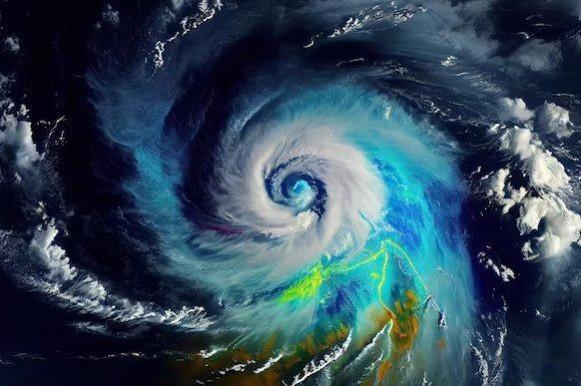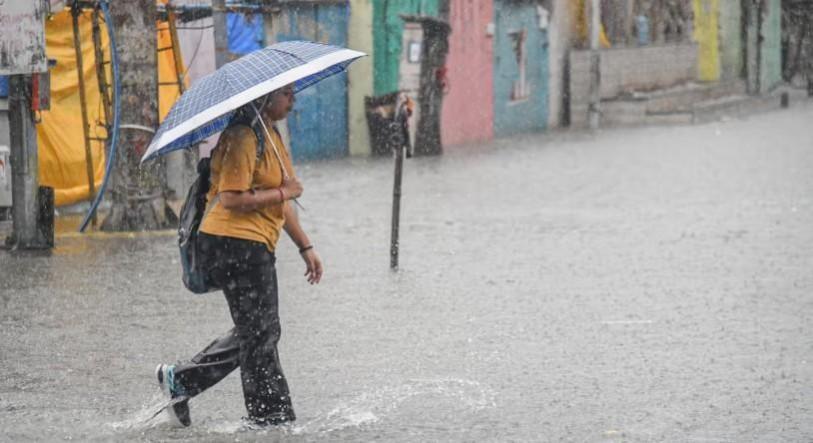
As Cyclone Montha advances over the Bay of Bengal, the Andhra Pradesh government has initiated extensive measures to mitigate its potential impact on coastal districts. The cyclone is expected to make landfall near Kakinada, prompting the deployment of National Disaster Response Force (NDRF) and State Disaster Response Force (SDRF) teams to six vulnerable districts. Prakhar Jain, Managing Director of the Andhra Pradesh Disaster Management Authority, confirmed the dispatch of eight NDRF teams and nine SDRF teams to the coastal areas for rescue and relief operations. These teams, originating from the NDRF's 10th battalion in Krishna district, have been strategically positioned in PSR Nellore, Srikakulam, Dr. BR Ambedkar Konaseema, Kakinada, West Godavari, and Krishna district.
In anticipation of the cyclone's impact, the state has suspended all fishing and boating activities along the seashores, with strict instructions issued to district collectors to prohibit tourist access to beaches. The Disaster Management Authority has advised residents to avoid travel between October 26 and October 29, as the depression over the southeast Bay of Bengal is expected to intensify into a cyclonic storm. The India Meteorological Department (IMD) has forecasted that the cyclone will bring strong winds with speeds reaching 90-100 kmph, gusting up to 110 kmph, at the time of landfall.
The depression was last reported to be centered approximately 610 km west of Port Blair, 850 km east-southeast of Chennai, 790 km south-southeast of Visakhapatnam, 840 km southeast of Kakinada, and 950 km south-southeast of Gopalpur. With heavy to very heavy rains anticipated in coastal Andhra Pradesh on Monday and Tuesday, the Disaster Management Authority has urged the public to remain vigilant.
Government Preparedness and Response
Chief Minister N. Chandrababu Naidu has taken proactive measures by alerting officials and directing them to develop an action plan to prevent loss of life and property. During a teleconference with district collectors and superintendents of police, the Chief Minister emphasized the need for heightened alertness, given the IMD's red alert for the Montha cyclone. He instructed district collectors to prepare for potential rainfall of up to 100 mm and to consider declaring holidays for educational institutions if necessary. Additionally, NDRF and SDRF teams have been deployed to vulnerable districts, and mobile hospitals have been readied in Kakinada.

In Kakinada, the Uppada Beach Road has been closed, and the district administration has canceled officials' leaves until October 30. Control rooms have been established in mandals likely to be affected by the cyclone. Chief Secretary K. Vijayanand has appointed special officers for 19 districts to coordinate relief and rehabilitation efforts, ensuring that assistance reaches affected individuals promptly. The state has been divided into three regions, with senior IAS officers Ajay Jain and R.P. Sisodia overseeing the coastal areas from Srikakulam to Konaseema and West Godavari to Prakasam, respectively.
The Meteorological Department has indicated that while Cyclone Montha will not directly impact West Bengal, it is likely to bring heavy rain to the region starting Monday. Districts in South Bengal, including Kolkata, are expected to experience rainfall due to the cyclone's influence. The cyclone is projected to make landfall between Machilipatnam and Kalingapatam on the Andhra Pradesh coast near Kakinada as a severe cyclonic storm, with maximum wind speeds of 90-100 kmph, potentially reaching 110 kmph.
Regional Impact and Historical Context
Sourish Banerjee, a MeT Department official, noted that although West Bengal will not face a direct impact, the sea will remain rough along the Bengal coast from October 28 to 30, with gusty winds of 35-45 kmph, possibly reaching 55 kmph. Fishermen in Bengal have been advised to avoid venturing into the sea during this period, and those already at sea have been urged to return by October 27.
In Odisha, the government has placed all 30 districts on alert as the depression over the Bay of Bengal intensifies. The IMD has issued red, orange, and yellow alerts for several southern and coastal districts, where rainfall exceeding 20 cm is expected in isolated areas. Odisha's Revenue and Disaster Management Minister, Suresh Pujari, stated that district collectors have been instructed to evacuate residents from low-lying areas and prepare for heavy rainfall and surface winds. The leaves of government employees in seven southern and coastal districts have been canceled to address the urgency of the situation.
The National Crisis Management Committee (NCMC), chaired by Cabinet Secretary TV Somanathan, has reviewed preparedness with the governments of Andhra Pradesh, Tamil Nadu, Odisha, and Puducherry. Somanathan emphasized the goal of ensuring zero loss of lives and minimizing damage to property and infrastructure. The NDRF has readied its teams for deployment, with additional forces on standby. The Army, Navy, Air Force, and Coast Guard have also positioned their rescue-and-relief teams, ships, and aircraft for rapid mobilization.
Strategic Measures and Historical Parallels
The Andhra Pradesh government has developed a comprehensive action plan for relief and essential supplies, including stock positioning of Public Distribution System (PDS) commodities, fuel inventory management, paddy procurement, and food supply to relief shelters. The supply of food grains to all fair price shops in coastal areas is to be completed by October 26, with sufficient stock already placed at Mandal Level Stock Points. District collectors have been directed to coordinate with Oil Marketing Companies (OMCs) to ensure diesel availability for power backup at telecom towers, control rooms, hospitals, and cyclone shelters during disruptions.
In preparation for the cyclone, nearly 1,500 mills have been tagged to Rythu Service Kendras (RSKs) in coastal districts, with millers instructed to provide drying space and covers for wet paddy. Additionally, 50,000 tarpaulins with ropes, sandbags, and plastic sheets have been prepared for crop protection as needed.
Historically, the Bay of Bengal has been a hotspot for cyclonic activity, with several significant cyclones impacting the region over the years. The 1999 Odisha cyclone, also known as the Paradip cyclone, was one of the most devastating, causing widespread destruction and loss of life. More recently, Cyclone Fani in 2019 and Cyclone Amphan in 2020 highlighted the region's vulnerability to such natural disasters. These events underscore the importance of preparedness and effective response strategies to mitigate the impact of cyclones on affected communities.
As Cyclone Montha approaches, the coordinated efforts of state and central agencies, along with the proactive measures taken by the Andhra Pradesh government, aim to safeguard lives and minimize damage. The situation remains dynamic, and authorities continue to monitor developments closely, ready to adapt their strategies as needed to protect the public and infrastructure.
















